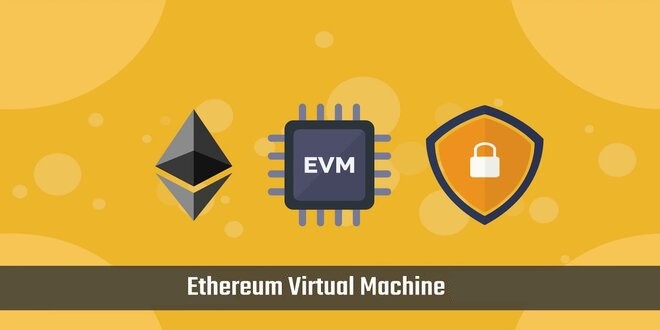The Ethereum Virtual Machine (EVM) is a processing engine that operates as a decentralized computer. This is important as it includes millions of executable applications that are based on the Ethereum system. It serves as the virtual computer that the Ethereum Foundation has kept at the core of its Ethereum Virtual Machine architecture. The EVM is that portion of the network that is responsible for implementing and deploying smart contracts.
The Strategic Role Of Ethereum Virtual Machine
The job of EVM is to include various added features into the Blockchain to assure a smooth user experience. The EVM tries to minimize the number of problems users may encounter when they use the distributed ledger.
Think of the Ethereum blockchain as a P2P (peer-to-peer) structure of nodes. Every node is responsible for the security and stability of the ecosystem. Every Ethereum node avails EVM to maintain consensus across the blockchain.
One of the features of EVM is that we could witness it as a closed system. The code inside the EVM is not accessible to the network, file system, or any other external action. This feature is a precise cybersecurity measure as it decreases the chances for malicious use of the Ethereum Virtual Machine.
The EVM is critical to assure the operation of Ethereum, but not all functions need it to operate. Simple transactions do not necessitate the utilization of the services of the EVM. On the contrary, other actions will need an update of the EVM’s state. In Ethereum, the global state is a way to map all addresses to accounts. Every address portrays an account with Ether balance, storage, nonce, and program code.
How Does Ethereum Virtual Machine Work?
As previously stated, the EVM is a digital stack included within an Ethereum node. The Ethereum Virtual Machine enables developers to build smart contracts and Dapps.
Smart contracts on the Ethereum network generally employ the Solidity programming language. The EVM manages to convert Solidity into bytecode. If you think about it, this is where the differentiation between the code and the network takes place.
The EVM allows developers to write code in a safe space. The system keeps track of every EVM cost and instruction. As a second step, it assigns a Gas fee to the instruction.
This system is also a clever one. In the process of a transaction failure, validators will always get a refund on the sum they paid. Along with that, it puts a stop to endless transactions, which may result in costly functioning. An ETH transaction is the outcome of any activity on Ethereum. To fulfill any function, users must pay transaction fees.
Gas fees tend to rise during times of heavy network activity, with several transactions. A single transaction can sometimes cost you as much as tens of dollars on Ethereum.
Pros And Cons Of EVM
If we were to mention the perks of using the Ethereum Virtual Machine, we could indeed state at least a couple of them.
For beginners, anyone may use the EVM to build their own Decentralized applications. There are countless possible apps for this form of software, with no economic or demographic limits.
Furthermore, smart contracts offer a lot of potential benefits. NFTs (Non-fungible tokens) is a recent instance of what we are saying. Anyone may create digital art and sell it on a decentralized marketplace by availing NFTs.
A piece of code can democratize digital access to the art space, at times unthinkable until a few years ago.
Along with that, the EVM technology arrives with an evident set of disadvantages. Using the Ethereum Virtual Machine needs at least minimal technical knowledge and experience. The market presently lacks a real user-friendly alternative to the EVM.
Secondly, the EVM is not a completely decentralized system. You will find it interesting to know that nearly 25 percent of Ethereum nodes operate on AWS (Amazon Web Services). What would occur if AWS discontinued its services or encountered a major outage?
Last but not least, let us state, once again, the gas fees are an important consideration. As smart as the EVM system may be, it cannot help with the data congestion of the network. As already stated, congestion leads to a rise in transaction fees.
Of course, the EVM is not accountable for the high gas fees of Ethereum. While we still wait for the famous ETH 2.0 upgrade, transaction costs stay at high levels in comparison to other chains.
The Bottom Line
The Ethereum Virtual Machine is the primary substructure enabling this blockchain to function regularly. Many illustrate Ethereum as “the future world computer,” so crypto enthusiasts are required to know about the EVM. This system is at the heart of operation execution and smart contract deployment. It employs several extra operations to assure that users do not face difficulties on the distributed ledger.
 Crypto Venture News One stop Crypto Track Down
Crypto Venture News One stop Crypto Track Down 






